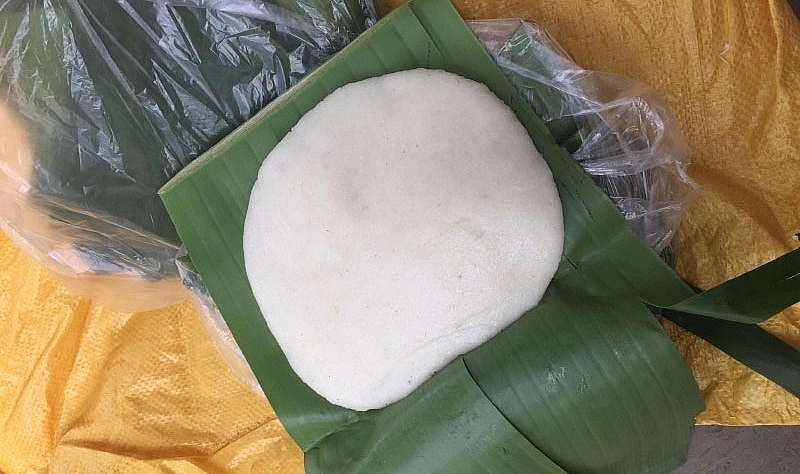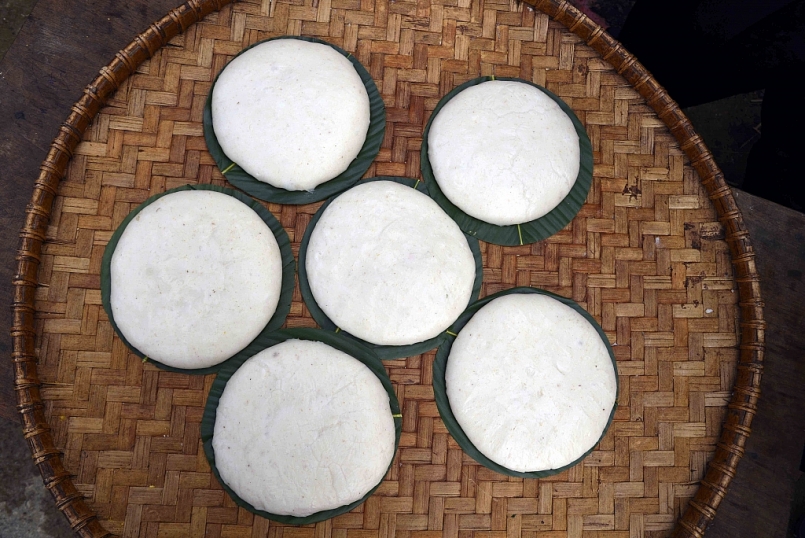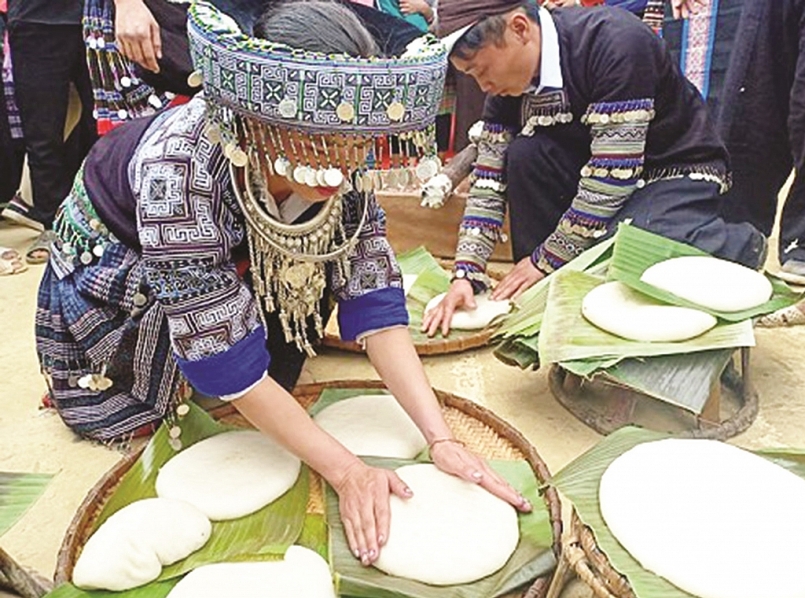 |
Banh day is called “Pé-Pluu”, according to the concept of the H’mong people, banh day is a symbol of the moon and sun, symbolizing the birth and growth of the vast universe. Besides, the cake is also a symbol of purity, loyalty, and color of H’mong women like a closed circle.
The H’mong people often make banh day on Tet and other festivals. Offering to the ancestral altar to express their respect, with the wish that the gods bless their big and strong legs, so that they can cross the mountain, row the pass, spread the fields and work in the fields. Blessing for bountiful crops, a prosperous and happy life.
When enjoying, people cut the cake into slices, then paste it with lard. When the cake is glued to swell, it is also the time when the aroma of upland sticky rice, mixed with the mild aroma of chicken eggs, and the greasy smell of lard spread throughout the small kitchen, creating an extremely attractive dish.
It looks simple, but in the process of making banh day, pounding the cake is the hardest and most labor-intensive step. The mortar for pounding banh day of the H’mong people is made of rosewood tree trunk, fine grained, fragrant. The beaters are also made from hard and heavy woods.
 |
Previously, the H’mong people used to celebrate the traditional New Year about 1 month before the Lunar New Year, that is, at the end of November and the beginning of December of the lunar calendar. Implementing a new cultural lifestyle, many places H’mong people now celebrate the traditional New Year with the whole country. However, the H’mong people still maintain their very own traditional cultural customs, including the custom of making banh day on Tet.
At the beginning of spring or festival days, some H’mong villages also organize a contest to make banh day between clans, families, and villages. This is a way of preserving, preserving and introducing the traditional culture of the H’mong ethnic group to tourists from all over the world.
Source: Collected internet.
Vietnam is located in the Indomalaya ecological region. According to the 2005 National Environmental Status Report, Vietnam is among the 25 countries with high levels of biodiversity, ranked 16th worldwide in terms of biodiversity and is home to about 16% of the world's biodiversity. species in the world. 15,986 plant species have been found throughout the country, of which 10% are endemic. Vietnam has 307 species of nematodes, 200 species of oligochaeta, 145 species of acarina, 113 species of springtails, 7,750 species of insects, 260 species of reptiles. , 120 species of amphibians, 840 species of birds and 310 species of mammals, of which 100 species of birds and 78 species of mammals are endemic. There are also 1,438 species of freshwater algae, accounting for 9.6% of the total number of algae species, as well as 794 species of aquatic invertebrates and 2,458 species of marine fish. In the late 1980s, a population of Javan Rhinos was discovered in Cat Tien National Park and it is possible that the last individual of this species in Vietnam died in 2010.
Vietnam has an area of 331,690 km², located in the east of the Indochina peninsula, in Southeast Asia. Sharing a border with three countries, Vietnam borders China to the north, Laos and Cambodia to the west, and the East Sea to the east. In 2019, Vietnam's population was more than 96 million people, ranking 13th in the world. Hanoi, the capital of Vietnam, is the second largest city with 6.2 million people, after Ho Chi Minh City, 8.8 million people.
Located on the banks of Ka Long, the border river between Vietnam and China, Xa Tac Temple, Mong Cai City, Quang Ninh Province, is not only a place to worship and practice folk cultural beliefs of residents. This place also has significance as a cultural milestone, affirming the sacred sovereignty of the Fatherland. Recently, this hundreds of years old historical and cultural relic was recognized by the Ministry of Culture, Sports and Tourism as a National relic because of its unique values....
With the support of the local government and cultural sector, 132 Ba Na ethnic households, Ro Ngao branch in Kon Trang Long Loi village, Dak Ha town, Dak Ha district, Kon Tum province built Successful Community Tourism Village, a destination for tourists from near and far when coming to Kon Tum. With the opening of a new economic industry, community tourism is helping people in Kon Trang Long Loi earn more income and improve their lives. This is also a good opportunity for people to preserve and promote traditional cultural values.
